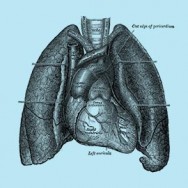
Minimally Invasive Aortic Root Replacement (mini-Bentall)
Background
The aortic root is the section of the aorta (the large artery leaving the heart) that is attached to the heart. The aortic root includes the annulus (tough, fibrous ring); the leaflets of the aortic valve; and the openings where the coronary arteries attach (coronary ostia).
An aneurysm is an abnormal bulge in the wall of a blood vessel. In some patients, an aneurysm can occur in the aortic root, causing it to dilate or widen. Without treatment, a life-threatening condition called aneurysm dissection can occur. In this condition, blood flows through a tear in the inner layer of the aorta, causing the layers to separate. Blood flow becomes interrupted and causes the arterial wall to burst.
About the surgery
Aortic root replacement with a composite valve-graft (referred to as Bentall’s procedure) is a surgical treatment for aortic root aneurysms with a diseased aortic valve. It involves replacement of the root and aortic valve with a graft and either a biological or mechanical valve prosthesis. For more information about standard Bentall, please refer to this page
In the standard procedure, the sternum (breast bone) is fully divided to access the heart (called a sternotomy). In the minimally invasive approach (referred to as mini-Bentall) a smaller incision is used, where only the top half of the sternum is divided (called a hemi-sternotomy). This is usually a 2 – 3-inch vertical incision.
Not everybody is suitable for a mini-Bentall procedure, so you should discuss this with your surgeon.
The benefits of the mini-Bentall include:
- Smaller incisions and better cosmetic result
- Less bleeding and risk of infection
- Less pain after the operation
- Shorter hospital stay (usually 3 to 4 days)
- Faster recovery and return to work
Recovery period
Patients usually stay in the intensive care unit for 1 – 2 days for monitoring, and then in the nursing unit for 2 – 3 days. Two to three tubes stay in the chest to drain fluid from around the heart, which are usually removed 1 – 3 days after the surgery. Full recovery usually takes about 1 – 2 months. Most patients are able to drive in about 3 to 8 weeks after surgery. Your surgeon will provide specific guidelines for your recovery and return to work.
Risks of the surgery
As with all surgery, mini-Bentall is associated with some risks. During the operation the minimally invasive approach may not be possible, and a standard full-sternotomy would have to be performed. Other risks in the short-term after the operation include wound infection, bleeding, kidney injury, stroke, heart attack, arrhythmias and pacemaker implantation, and possibly death. . In the long-term the artificial valve may fail or the graft may dilate and aneurysm, and another operation may be required to replace them.
All patients should consult their cardiothoracic surgeon for specific information about their medical condition and surgery.

